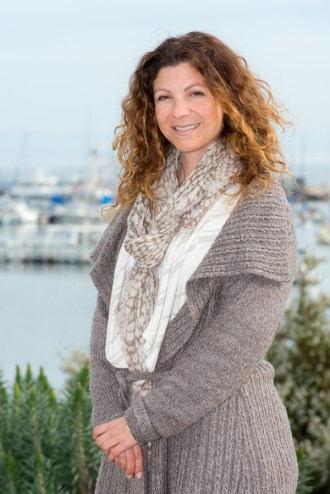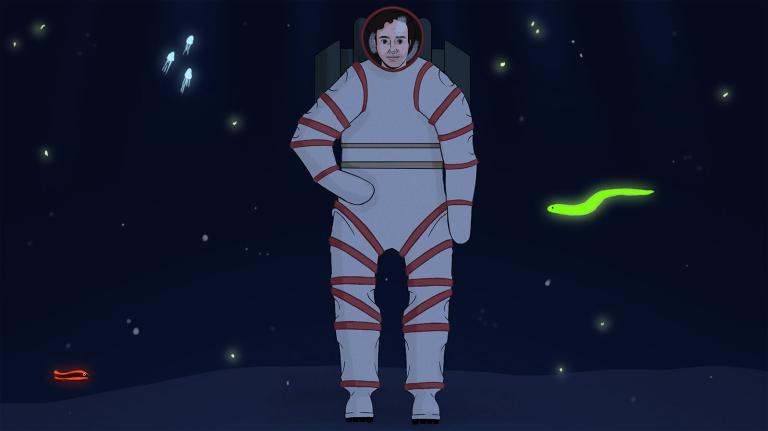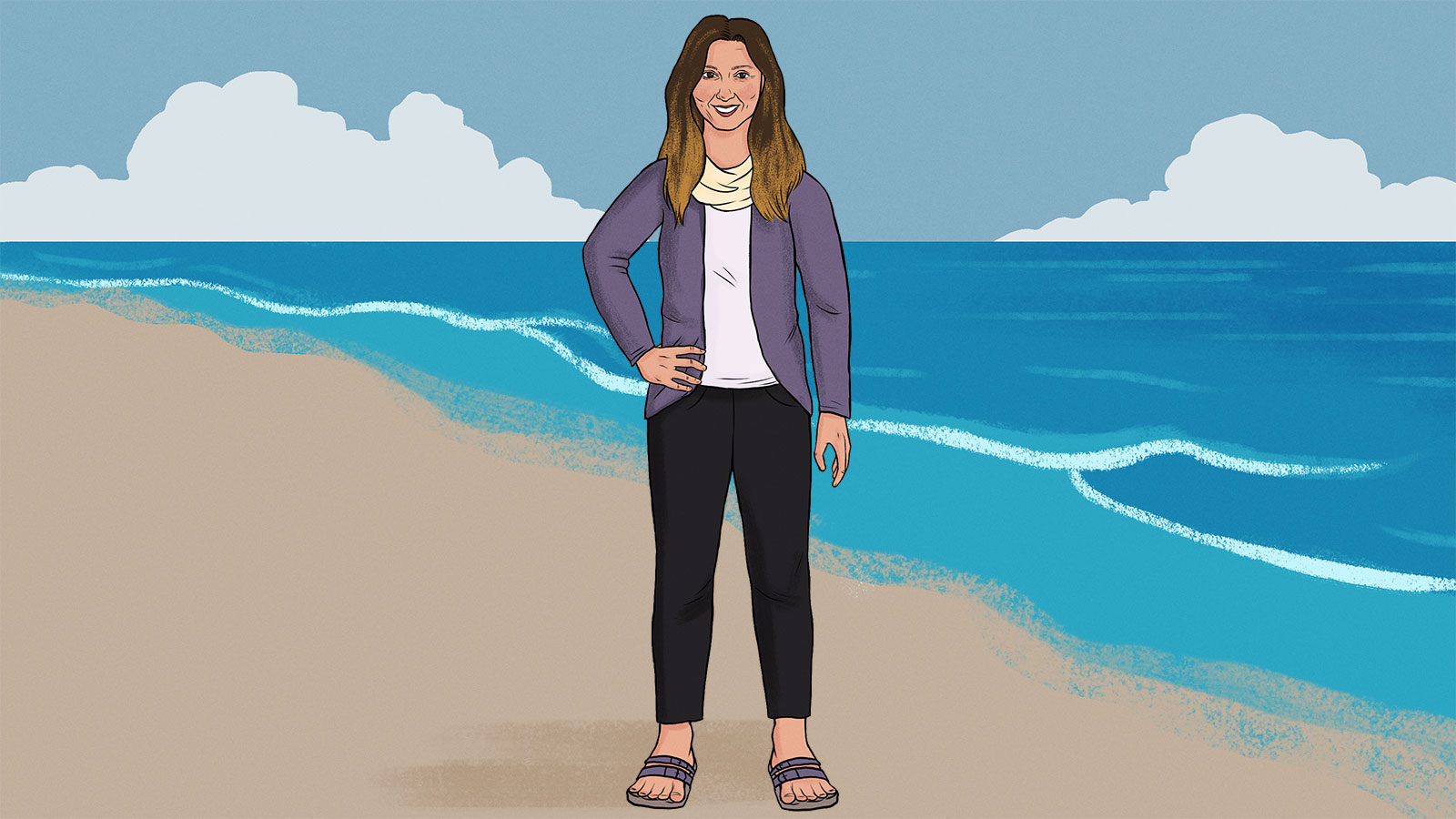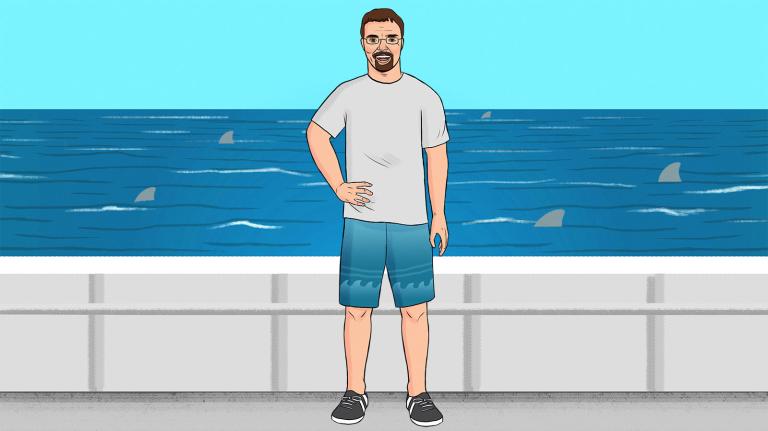Eating the right seafood can be a tricky thing. You don’t have to look too far to find examples of species that have been overfished to satisfy our hunger, or creatures that are unintentionally threatened by our nets, or our bad habit of shuffling species and ecosystems together. But ocean advocate Jennifer Dianto Kemmerly still wants you to indulge in the good stuff — so long as it comes from the right sources. She’s the executive director of the Monterey Bay Aquarium’s Seafood Watch, the country’s leading program for sustainable seafood.
Seafood Watch is based on the premise that consumers, armed with the right information, have the power to drive change. The SFW website, app, and handy pocket guides provide info so that shoppers and diners can decide what seafood to order based on its environmental impact. Kemmerly’s not asking you to give up lox for breakfast or sushi for dinner; she just wants you to ask where it came from.
[grist-related-series]
“Change happens when people are persistent,” Kemmerly says. “We want people to make a little noise and show the business community that this is an important issue. Ask where that seafood comes from. Ask if they have a sustainable seafood program where you shop. And if they do, say thank you.”
We got Kemmerly to give us the scoop on sustainable fishery management, the rising role of aquaculture, and how, in the face of wide scale ocean woes, we fish eaters have the power to turn the tides. Here’s what she had to say.
***
Q. There are a growing number of seafood certification programs, but Seafood Watch remains the most widely known. What is that pressure like, having everyone come to you in order to tell them what’s sustainable?
A. It’s a welcome challenge, I can tell you that. We’ve been working really hard for over a decade to raise enough consumer awareness so that businesses would then respond. So if we have a lot of pressure on us, that means mission accomplished — at least with the first part of the mission, of getting people to care.
Q. What is the process that goes into determining whether a seafood is sustainable or not?
A. The first thing we do is collect information about the fishery in question. So, Samantha, what’s your favorite seafood?
Q. I do love a good piece of salmon.
A. Good. So let’s say it’s wild salmon from off the coast in Oregon. First we would gather all the publicly available information about that fishery and run it through our criteria to give it a number score in a draft assessment. Then we would send that draft assessment out for peer review to at least three experts in that particular fishery. After bringing the draft back to look at their comments, we would run it by a panel of our staff and also a team of NGOs who use our Seafood Watch recommendation. Then, after making sure that we’ve got all outstanding questions answered, we publish the final result on our website and pocket guide and app, with the number score translated into to a color code: either green best choice, yellow good alternative, or red avoid.
Q. It sounds like there’s a lot of different people involved in that process who might bring different perspectives on what’s sustainable or not. Do you have to manage conflicts of interests in terms of scoring seafood?
A. I think we’re comfortable in this role because all of our information, and all of our seafood scores, are ultimately science-based. So it’s been very difficult for anyone to shoot holes through any of our assessments. And if an error is found, we do immediately update it. It has been really helpful to be totally transparent; we have all of our assessments out in the public domain.
Q. How often do you have to change your recommendations once they’re made?

Jennifer Dianto Kemmerly, Director of the Seafood Watch Program at the Monterey Bay Aquarium
A. It really depends on the fishery or fish farming operation in question. At the very least, we update everything every three years. However, a lot of fisheries have annual stock assessments and there’s new information coming out all the time, which we incorporate. We also have an online Seafood Watch assessment tool, which anyone can use to let us know “hey, here’s a new publication that we think you guys should be interested in.”
Q. About a year ago Seafood Watch moved about 20 species, mostly West Coast groundfish, from the red “avoid” list to the yellow or green “OK” lists. How confident do you have to be in order to make a decision like that, that the fishery is now sustainable enough?
A. Very. But I’ll elaborate. When we move something out of the red — or even if something is already a green “best choice” — a lot of people wonder whether we’re just encouraging people to buy it, and thus leading it to being overfished again. But our scores don’t just depend on the current state of the stock. We also have criteria for the fisheries management: the science-based rules and regulations in place, like a cap on how many fish you can take, or some other control that would prevent an overharvest from happening.
So, for the groundfish example, we saw a real turn-around with fishermen, academia, NGOs, and the fisheries managers all working together to come up with a plan that would sustain the fishery.
Q. Some of the stats on your website about how much seafood comes from illegal, unreported, or mismanaged fisheries is, well, scary. And then there are the associated issues related to seafood fraud, where the fish on your plate is labeled as something else to make it sound more appealing. How much of this actually goes on in U.S. markets?
A. I don’t think any market, unfortunately, is immune to seafood fraud and illegal fishing. That’s why president Obama last year created a presidential task force, to improve traceability in the seafood industry. There are some fundamental things that everyone should be asking about their seafood — and it doesn’t matter if you’re a consumer or a business or a seafood supplier.
One is “what species is the fish?” One of the big problems with common names is that you could say “shrimp” and be talking about 20 different species shrimp. You say “snapper,” you could be talking about 20 different species of snapper. All of which have very unique issues and quality and taste.
We should also be asking about where our seafood actually came from — not where it was last processed — but where it was actually caught or farmed, because that’s what really speaks to how well managed it may be and what rules are in effect to protect the environment and the resource.
And then, how was it caught or farmed. For programs like Seafood Watch, the type of gear or fishing or farming practice you use really makes a difference. Without that fundamental information — those three key data elements of what, where, and how — you really don’t know how that fishery is performing, and then you really can’t make and informed choice.
When I go to a restaurant and I order a bottle of wine, I’m presented with a wine list that tells me what year the wine is from, what vineyard, what kind of grape; I know whether it’s a blend, I know where it’s from, sometimes I even know down to the specific region. If I knew half of that information about my seafood, we’d be getting someplace.
Q. But most of the time all of that information is hard to collect. If someone goes to a restaurant or the grocery store and asks for the deets on their chowder but their waiter or grocer doesn’t know the answers, how should that person proceed?
A. Our ask of consumers is just to ask. You might not get an answer, but the business community needs that constant consistent pressure from consumers to know that it’s important, or else they’re not going to make the change and push it down the supply chain. Our theory of change posits that consumers need to just consistently ask and then that will tip the businesses to say “alright, this is important to my customer, I need to get this information from my supplier,” who will then get it from the fishermen or fish farmer and so on down the line.
For example, if you go to a retailer like Safeway or Target, or food service companies like Aramark and Compass Group, these are big companies that have made commitments to sustainable seafood and are working on getting this information for their customers because they’ve heard the demand from customers.
Q. Some environmentalists argue that we shouldn’t eat seafood at all — and, given how complicated fisheries and fishery science are, that seems like it would be a much simpler message. Why encourage consumers to buy seafood at all? And are there enough fish to go around to both have sustainable management practices and feed the world?
A. I don’t think wild caught seafood is a resource that’s going to feed the world. There are coastal communities who rely on seafood as their primary source of protein, and I think our market needs to realize that we need to sustain the resource not just so we can have the seafood to enjoy, but we don’t want to take it out of the mouths of others.
But this is why Seafood Watch also assesses farm-raised seafood. We really want people to eat seafood — it’s a healthy option — and if you take the wild caught supply and couple that with sustainably harvested or farm raised seafood, you can feed the world. We just have to make sure that we don’t develop farm-raised seafood in a manner that has other environmental impacts.
Q. Last but not least: What’s your favorite seafood?
A. I really enjoy all tuna. But tuna management can be frustrating to me. Because these are highly migratory species, there are many countries that have to reach a consensus on how to manage that resource … when you’ve got a management system that relies on international agreement, change is going to be slow-going. And sometimes these fish don’t have that time, because we’re taking them faster than they can reproduce.
So when programs like Seafood Watch can take consumer demand and businesses and bring all of that market power to the table and say to these countries, ‘You’ve got to do something’ — that’s powerful. I really am a true believer in using the market to help move the needle a little faster than just politics alone.




